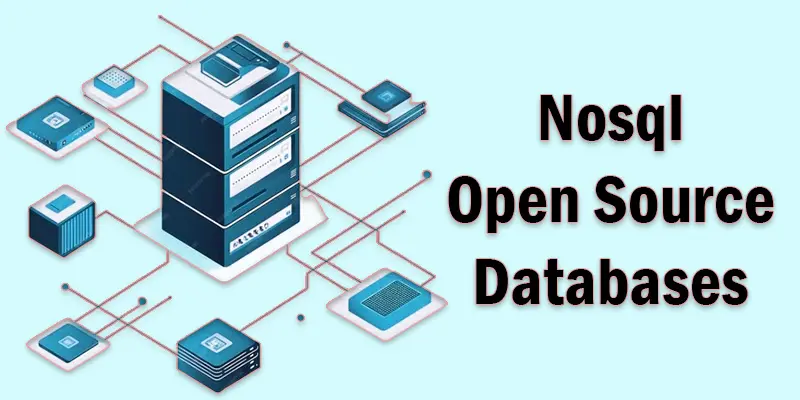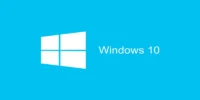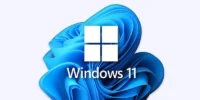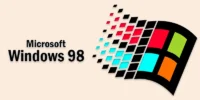Popular Open-Source NoSQL Databases: Features, Uses & Real-Life Examples
Published: 12 May 2025
Nosql Open Source Databases
NoSQL open-source databases are widely used in modern applications, handling massive data loads with high speed and flexibility. But with so many options available, how do you know which one fits your needs? Many developers struggle with traditional databases that lack scalability, making it hard to manage growing data. Imagine storing data like a giant, flexible digital notebook instead of rigid tables—that’s the power of NoSQL! Let’s explore how these databases work and why they are a game-changer.
What is a NoSQL Database?
In contrast to conventional SQL databases, a NoSQL database is a non-relational database that stores and maintains data in a flexible fashion. It arranges data as documents, key-value pairs, wide columns, or graphs rather than tables with set schemas. Large volumes of unstructured or semi-structured data can be handled using NoSQL databases, which are built for scalability and quick performance.
NoSQL databases are built for scalability, high-speed performance, and flexibility. They are ideal for handling big data, real-time applications, and cloud-based systems where traditional databases may struggle.

Popular NoSQL Databases
Open-source NoSQL databases offer flexibility, scalability, and high performance for modern applications.
- MongoDB
- Apache Cassandra
- Redis
- Neo4j
- CouchDB
- Amazon DynamoDB
- HBase
- RavenDB
- ArangoDB
- OrientDB
MongoDB
MongoDB is a NoSQL database that stores data in documents that look like JSON instead of tables.It is flexible, scalable, and great for handling large amounts of unstructured data. Many businesses use MongoDB for real-time applications, big data, and cloud-based services because it can handle fast-growing data efficiently.
Example
An e-commerce website uses MongoDB to store product details, customer reviews, and order history in a flexible way, making it easy to update and retrieve information quickly.
Cassandra, an Apache
Apache Cassandra is a highly scalable NoSQL database that efficiently handles massive amounts of data across multiple servers.It guarantees high availability and fault tolerance by removing any single point of failure.a Because of its dependability and speed, it is used by large companies that must manage and store enormous datasets in real-time. Applications requiring high availability and fast response times are best suited for Cassandra.
Example
A streaming platform like Netflix uses Apache Cassandra to store user watch history and ensure smooth video playback without delays.
Redis
Key-value pairs are used to store data in Redis, a quick, in-memory NoSQL database. It is mainly used for caching, real-time applications, and session management because it quickly retrieves data. Unlike traditional databases, Redis keeps data in RAM, making it much faster.
Example
A shopping website uses Redis to store a user’s cart items, so they load instantly when the user returns.
Neo4j
Neo4j is a graph database that stores information using nodes and relationships as opposed to tables. It is best for handling connected data, like social networks, recommendations, and fraud detection. Neo4j helps find relationships between data quickly and efficiently.
Example
A social media app can use Neo4j to connect users based on their friends, interests, and interactions, making it easier to suggest new friends.
CouchDB
CouchDB is a document-oriented NoSQL database that stores JSON data. It is designed for easy replication and offline access, making it great for distributed systems. CouchDB is often used in mobile and web applications where data needs to sync across multiple devices.
Example
A note-taking app that works offline and syncs notes automatically when the internet is available can use CouchDB to store and update data smoothly.
DynamoDB on Amazon
AWS offers a fully managed NoSQL database service called Amazon DynamoDB. It is designed for speedy performance, high availability, and scalability. It stores data in key-value pairs and documents, making it great for handling large-scale applications. Many companies use it for real-time applications, gaming, and IoT.
Example
A popular e-commerce website uses DynamoDB to store customer orders and shopping cart data, ensuring fast and reliable access.

HBase
HBase is a NoSQL database that stores large amounts of structured data in a distributed way. It is built on Apache Hadoop and is designed to handle big data workloads with fast read and write operations. HBase is great for real-time analytics and can scale across many servers.
Example
A social media platform can use HBase to store and analyze millions of user posts in real time.
RavenDB
The NoSQL database RavenDB was created with ease of use, scalability, and great performance in mind. It facilitates automatic indexing to expedite searches and stores data in JSON documents. RavenDB is great for applications that need fast data access and real-time processing.
Example
An e-commerce website can use RavenDB to store customer orders, product details, and inventory data, ensuring quick and efficient order processing.
ArangoDB
Being a multi-model NoSQL database, ArangoDB may store information in a single system as documents, key-value pairs, and graphs. It is designed for high performance, scalability, and flexibility, making it great for handling complex data relationships. Developers use ArangoDB for real-time applications, recommendation systems, and analytics.
Example
A social media app can use ArangoDB to store user profiles (documents), friend lists (graphs), and user preferences (key-value pairs) all in one database.
OrientDB
The characteristics of document, object, key-value, and graph databases are all combined in OrientDB, a multi-model NoSQL database.It is designed for high performance, scalability, and flexibility, making it ideal for handling complex data relationships. OrientDB is used in fraud detection, social networks, and big data applications.
Example
A bank can use OrientDB to store customer data and their connections, such as transactions, accounts, and relationships between users, helping detect fraud more efficiently.
Key Features of NoSQL Open-Source Databases
- Schema Flexibility – No fixed structure; stores data in documents, key-value pairs, columns, or graphs.
- Scalability – Supports horizontal scaling, making it ideal for handling large data loads.
- High Performance – Optimized for fast read and write operations, ensuring low latency.
- Distributed Architecture – Data is stored across multiple servers, improving reliability.
- Support for Unstructured Data – Handles JSON, XML, and other flexible formats efficiently.
- Replication & Fault Tolerance – Ensures data availability even if some servers fail.
- Open-Source & Community-Driven – Free to use, with active developer support.
- Multi-Model Support – Some NoSQL databases (e.g., ArangoDB, OrientDB) support multiple data models.
- Easy Integration – Works well with modern applications, cloud computing, and big data.
- Eventual Consistency – Ensures data accuracy over time, balancing speed and consistency.
How to Choose the Right NoSQL Database
Your use case, scalability requirements, and data structure will all influence which NoSQL database is best for you.
Consider Your Data Type
- Document-Based (e.g., MongoDB) – Best for storing flexible, semi-structured data like user profiles or product catalogs.
- Key-Value Store (e.g., Redis) – Ideal for caching and real-time applications like leaderboards or session management.
- Column-Family Store (e.g., Apache Cassandra) – Perfect for big data and high-speed analytics.
- Graph Database (e.g., Neo4j) – Great for storing relationships in social networks or recommendation engines.
Think About Scalability
- Need horizontal scaling? Choose MongoDB, Cassandra, or DynamoDB.
- Need in-memory speed? Go with Redis for fast data access.
Look at Performance Needs
- If fast reads matter, choose Cassandra or MongoDB.
- If low-latency performance is key, use Redis.
Consider Ease of Use and Integration
- MongoDB is beginner-friendly with JSON-based documents.
- Cassandra is great for distributed applications but needs more setup.

Conclusion About Open Source Nosql Databases
We’ve covered NoSQL open-source databases in detail. If you need flexibility and scalability, MongoDB is a great choice. For big data applications, Cassandra is highly reliable, while Redis is perfect for real-time caching. The database you choose will rely on your unique requirements. Explore these databases, test their features, and find the one that best suits your project. Let us know in the comments which NoSQL database you prefer!
FAQS Best NoSQL Databases
Use a NoSQL database when you need to handle large, unstructured, or rapidly changing data. It’s best for real-time applications, big data, and cloud-based services. If flexibility and scalability are priorities, NoSQL is a great choice.
NoSQL is better when data is unstructured, growing fast, or needs high scalability. Unlike SQL, it doesn’t require a fixed schema, making it ideal for social media, IoT, and big data applications. It’s also great for real-time performance and distributed systems.
Choose MongoDB for flexibility, Cassandra for big data, and Redis for fast caching. If your data is highly connected, Neo4j (graph database) is a good choice. Pick a NoSQL database based on your specific project needs.
NoSQL databases do not use tables to store data; instead, they use documents, key-value pairs, columns, or graphs. By adding more servers, they can manage massive data volumes since they grow horizontally. This makes them faster and more flexible than traditional SQL databases.
NoSQL databases use horizontal scaling, meaning they add more servers instead of upgrading one big server. This allows them to handle huge amounts of data and traffic efficiently. They are ideal for cloud-based and big data applications.
No, AWS DocumentDB is not open source.It is a proprietary NoSQL database that is compatible with MongoDB and is run by Amazon Web Services. While it works like MongoDB, its backend is closed-source.
There are many open-source databases, including MongoDB, Apache Cassandra, Redis, CouchDB, and Neo4j. These databases are free to use and can be modified based on user needs. They are widely used for handling large and flexible datasets.
Yes, Amazon uses NoSQL databases, mainly Amazon DynamoDB. It powers Amazon’s shopping cart, order management, and recommendation system.DynamoDB is a managed NoSQL service that is extremely scalable.
Yes, Netflix relies on NoSQL databases, especially Apache Cassandra. It helps store and manage huge amounts of streaming data efficiently. NoSQL databases allow Netflix to handle millions of users in real-time.
YouTube primarily uses Bigtable, a NoSQL database developed by Google Cloud. It helps YouTube store and manage videos, comments, and user data at scale. Bigtable ensures fast access and smooth streaming.
Yes, Microsoft uses NoSQL databases, including Azure Cosmos DB. It supports Microsoft services like Xbox, Skype, and Office 365. Cosmos DB offers high scalability and global distribution for handling large workloads.

- Be Respectful
- Stay Relevant
- Stay Positive
- True Feedback
- Encourage Discussion
- Avoid Spamming
- No Fake News
- Don't Copy-Paste
- No Personal Attacks

- Be Respectful
- Stay Relevant
- Stay Positive
- True Feedback
- Encourage Discussion
- Avoid Spamming
- No Fake News
- Don't Copy-Paste
- No Personal Attacks





